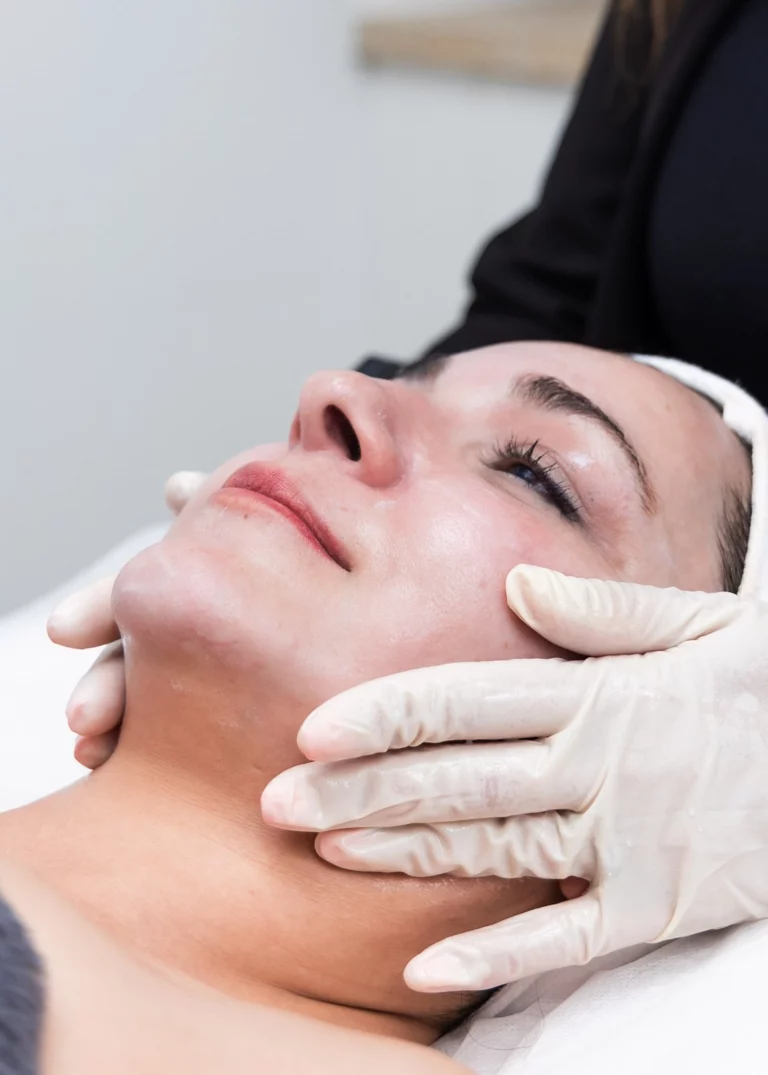Chemical and medical peels, also known as medi-facials, are skincare treatments aimed at rejuvenating the skin’s appearance by promoting exfoliation and cell turnover. Peels are a great way to address a variety of skin concerns including uneven skin tone and texture, acne, scarring, hyperpigmentation, sun damage, dull and dry skin, and wrinkles.
Our skin naturally renews itself every 28 days, however, over time this process slows down or can be disrupted during certain periods like pregnancy, adolescence, and menopause. Depending on your skin goals, we apply a non-invasive solution to the skin’s surface which encourages the shedding of dead skin cells and stimulates the growth of new skin cells, leading to a refreshed, smoother, and more even complexion.
Starting from $120

The duration of the results from a chemical peel can vary depending on several factors, including the type and depth of the peel, your skin type, and how well you care for your skin post-procedure.
Chemical peels can be safe and effective for improving skin texture and addressing various skin issues when performed by experienced professionals and with proper care. It’s essential to do your research, consult with one of our experts and follow post-treatment instructions for the best results and safety.
Right after the peel, your skin may appear red and feel a little tight. Depending on the depth of the peel, you might also experience some mild discomfort or a burning sensation. Throughout the recovery period and beyond, it’s crucial to follow our post-peel care instructions.
The full benefits of a chemical peel may not be immediately apparent. Your skin will continue to improve in the weeks following the treatment. Depending on the type of peel, you may need multiple sessions for optimal results. Remember that individual experiences may vary.
A chemical peel can feel like a tingling or temporary burning sensation during application. Afterward, your skin may be sensitive, similar to a mild sunburn, which can last for a few hours to days, depending on the peel’s depth.
People who should be cautious or avoid chemical peels include:
Always consult with our professional team before a chemical peel to assess suitability.
The term Chemical peels and Medical Peels are often used interchangeably. Superficial peels are lighter and address mild issues, while medium to deep peels are more intense and target significant skin concerns.